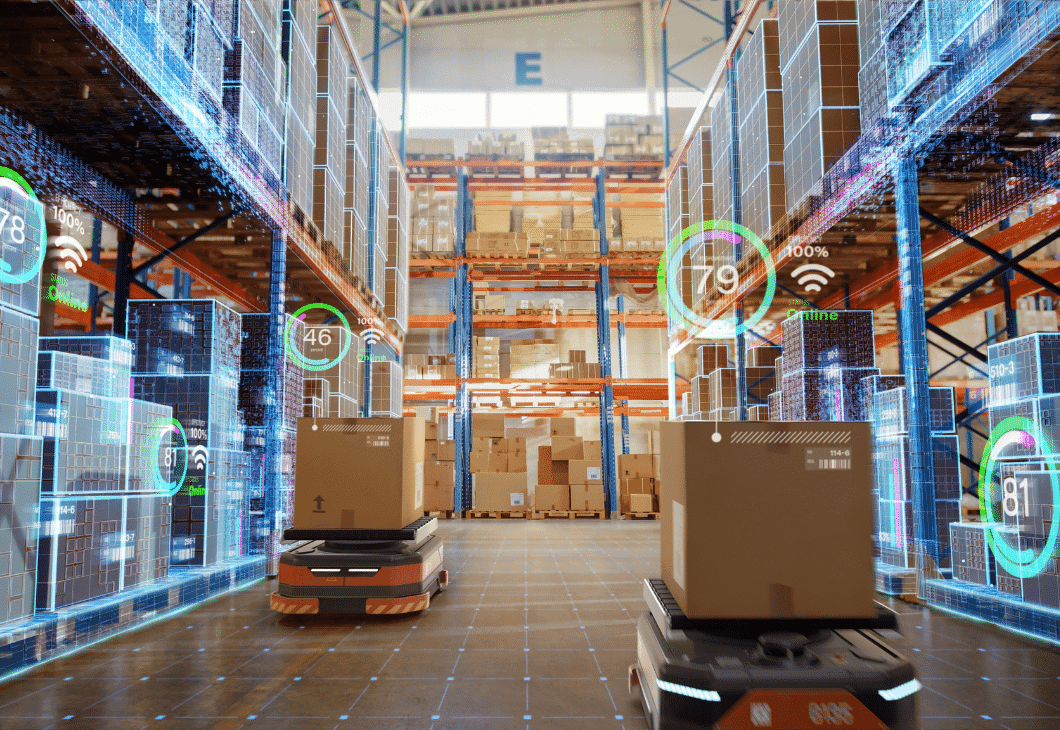

What is a Digital Supply Chain Twin?
In the ever-evolving landscape of logistics and supply chain management, the concept of a “Digital Supply Chain Twin” has emerged as a revolutionary tool that promises to transform the way businesses operate and optimise their supply chains. This blog explores what a Digital Supply Chain Twin is, its significance, and how it is reshaping the future of supply chain management.
According to IBM, “A digital twin is a virtual representation of an object or system that spans its lifecycle, is updated from real-time data, and uses simulation, machine learning and reasoning to help decision-making.”
Understanding the Digital Supply Chain Twin
The Digital Twin concept was first adopted by NASA – John Vickers of NASA gave the concept its name in a 2010 Roadmap Report. In 2017, Gartner named the concept as one of the top 10 strategic technology trends. Since then, the principle has been used in various business applications and operations.
Imagine having an exact virtual replica of your entire supply chain, from raw material suppliers to end customers, complete with real-time data and analytics. That’s precisely what a Digital Supply Chain Twin aims to provide. It is a digital representation of your physical supply chain, which encompasses all the elements, processes, and interactions within the chain.
At its core, a Digital Supply Chain Twin is a dynamic, data-driven model that mirrors your supply chain in real-time. This digital twin leverages technologies like the Internet of Things (IoT), big data analytics, and artificial intelligence (AI) to collect and process data from various sources throughout the supply chain.
Why is it significant?
The significance of a Digital Supply Chain Twin lies in its ability to offer unprecedented visibility, control, and optimisation capabilities to businesses. Here are some key reasons why it’s becoming a game-changer in supply chain management:
- Enhanced visibility: With a Digital Supply Chain Twin, companies gain real-time visibility into every aspect of their supply chain. They can track the movement of goods, monitor inventory levels, and analyse production processes with a level of granularity that was previously unimaginable.
- Predictive insights: Thanks to advanced analytics and AI, these digital twins can predict potential disruptions or bottlenecks in the supply chain, allowing companies to take proactive measures to address issues before they escalate.
- Improved decision-making: Armed with accurate, real-time data, supply chain professionals can make more informed decisions. Whether it’s adjusting production schedules, optimising routes, or managing inventory levels, having a digital twin provides the necessary data for agile decision-making.
- Optimised operations: Digital Supply Chain Twins enable companies to optimise their supply chain operations continuously. By simulating different scenarios and experimenting with various parameters, businesses can identify the most efficient processes and strategies.
- Cost reduction: The ability to optimise operations and respond to disruptions swiftly can lead to substantial cost savings. Whether it’s through reduced inventory carrying costs or more efficient transportation routes, the financial benefits are significant.
- Customer satisfaction: Ultimately, a Digital Supply Chain Twin can improve customer satisfaction by ensuring on-time deliveries, minimising stockouts, and enhancing overall reliability.
How does it work?
Within the current landscape, a Digital Supply Chain Twin can easily be linked from software systems and physical items, such as packing lists and labels using 2D barcodes. This link from the economic object to its Digital Twin allows the on-demand purchase of data about the object, possibly excluding the need for a direct system integration in some scenarios. Creating a Digital Supply Chain Twin involves several steps:
- Data collection: IoT devices, sensors, and other data sources collect information from various points in the supply chain. This can include data on temperature, humidity, location, and more.
- Data integration: The collected data is integrated into a central platform or system, where it is processed, cleaned, and standardised.
- Modelling and simulation: Using advanced modelling techniques and algorithms, a digital representation of the supply chain is created. This model takes into account all the variables and interactions within the chain.
- Real-time updates: The digital twin continuously receives real-time data from the supply chain, updating the model to reflect the current state.
- Analytics and optimisation: AI-driven analytics tools analyse the data and provide insights into the supply chain’s performance. Optimisation algorithms can be used to suggest improvements and make predictions.
The future of supply chain management
As technology continues to advance, the Digital Supply Chain Twin is poised to become an indispensable tool for businesses of all sizes and industries. It promises to reshape supply chain management by providing a level of visibility, agility, and efficiency that was previously unattainable. Cases like implementing a Digital Twin in reverse logistics can offer several significant advantages to companies looking to streamline their returns and product recovery processes.
In conclusion, a Digital Supply Chain Twin is not merely a technological buzzword; it’s a transformative concept with the potential to revolutionise how businesses manage their supply chains. By harnessing the power of real-time data, advanced analytics, and AI, companies can optimise their operations, reduce costs, and deliver better experiences to their customers.
MIXMOVE provides cloud software that supports logistics by connecting systems, increasing profitability and reducing C02 emissions. For more than 10 years, we have given shippers, carriers, forwarders and logistics service providers the best customer experience in getting logistics transparency, predictability and resilience. We have a proven track record in delivering high ROI for our customers, some of which include DSV, Gebrüder Weiss, 3M, Volkswagen TPS, DHL and more.
Learn more about using a Supply Chain Digital Twin in our white paper – Use a Digital Supply Chain Twin to double your logistics performance.